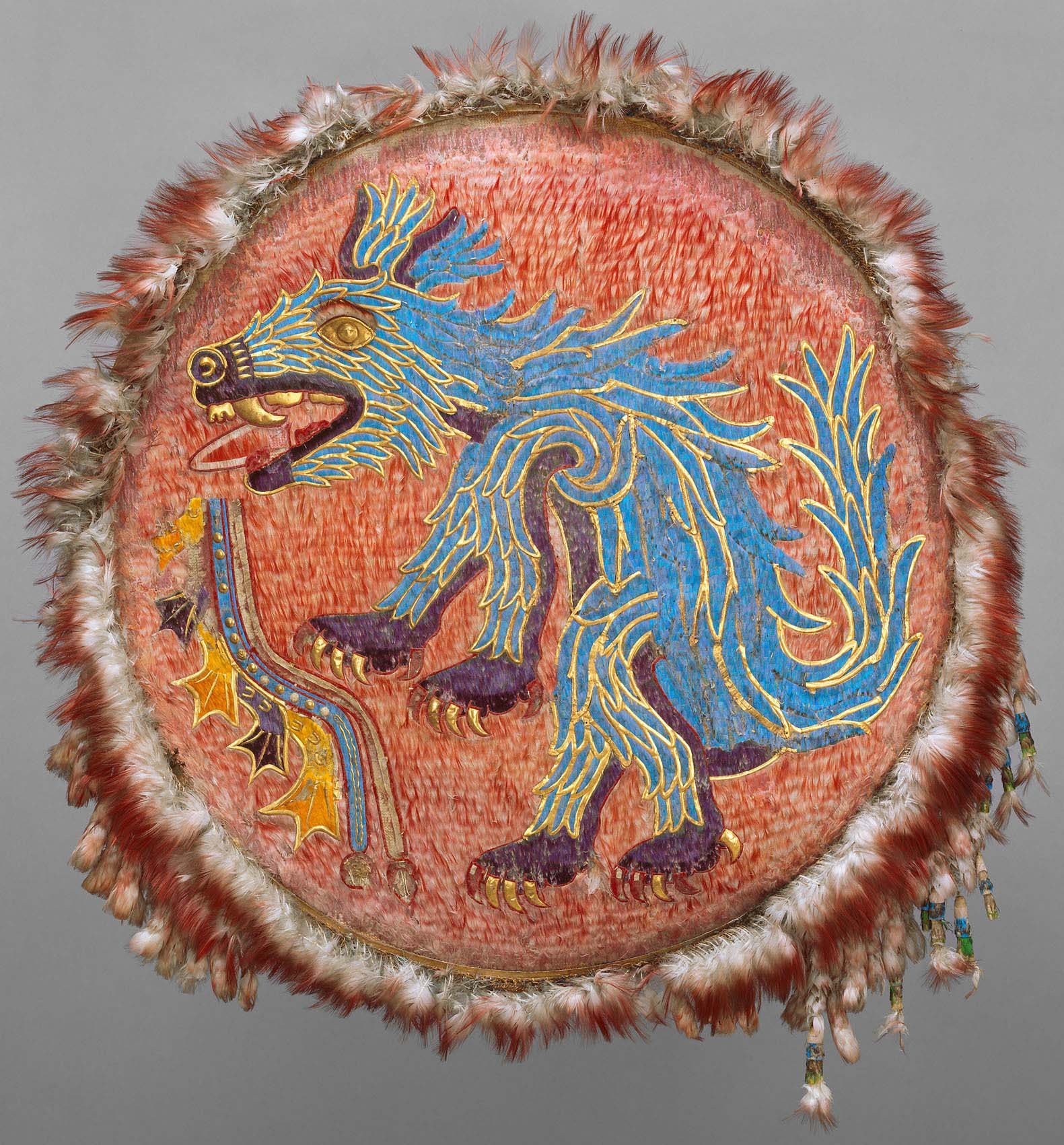MEXICO CITY (CN) — A feathered headdress some say belonged to Aztec emperor Moctezuma is the centerpiece of Mexico’s yearslong dispute with Austria over cultural artifacts taken during the colonial period.
However, the collection of items held at the Weltmuseum Wien in Vienna, Austria’s largest anthropological museum, contains many more artifacts that Mexico considers to be plunder and wants back.
The museum also houses two 15th-century deerskin codices detailing the political and religious histories of the Mixtec people, a sculpture of the plumed serpent deity Quetzalcóatl and a carved stone piece used in the famous Mesoamerican ball game, among others, according to the Mexican newspaper La Jornada.
Other important pieces include a representation of the Aztec goddess of maize Chicomecóatl, a green stone mask of Xipe Tótec, a god known as “Our Lord the Flayed One,” and a shield believed to have belonged to Moctezuma’s predecessor Ahuízotl.
President Andrés Manuel López Obrador has made a point of demanding the return of the headdress and other pieces during his administration, though his insistence has been branded more political posturing than serious request.
"Even if it's not written, we maintain that all those pieces ... belong to the Mexican people and that they were stolen illegally," he said in a morning press conference this past week, calling out other countries like France, Italy and the United States, as well. "So we're going to keep demanding that they return all those pieces that are auctioned in Europe."

In October 2020, López Obrador sent his wife Beatriz Gutiérrez Müller to Austria to request the temporary loan of the headdress, but she was reportedly met with derision.
“I got up and left so as not to waste any more time,” she told Courthouse News in a written exchange.
In what she described as a kind of “mocking consolation," a representative of the museum told her that the institution offered free admission to Mexican citizens.
“I laughed openly at that [and said], ‘Are you kidding me? Coming to see the headdress and not being charged 10 euros is a bad joke. Are you going to pay their airfare and hotel, as well?’” Gutiérrez said.
Gutiérrez called the reason for not returning the headdress — that it is too fragile to transport — “clearly a pretext.”
She pointed to the frequent auctions of pre-Hispanic art and traveling exhibitions as proof that technology has advanced well enough to move such delicate pieces.
The temporary exhibition “La Grandeza de México” (The Nobility of Mexico), at the National Anthropology Museum in Mexico City through April, includes a 17th-century outfit made of hummingbird feathers that was brought from Italy “without destroying a single feather,” she said.
Gutiérrez inaugurated a 2020 exhibition of Olmec artifacts in Paris, in which a piece found in a swamp in “at least 500 pieces” had been put back together and shipped safely to the French capital “and later, paradoxically, to Vienna.”

Experts, however, say that in the case of the headdress, the claim of fragility is not pretext. While it may not be impossible to transport the artifact, it isn't possible yet, said Sandra Rozental, a social anthropologist at Mexico's Metropolitan Autonomous University.
She pointed to a binational study carried out by experts from both countries from 2010 to 2012 that found that the technology available at the time would have subjected the headdress to vibrations that would cause the equivalent of a century's worth of damage to it.
"To say that the headdress must be repatriated is a simplification of a very complex situation, not just because of the condition of the piece, but also in terms of where it would be repatriated," she said, noting that Mexico's own National Anthropology Museum is full of pieces that could be considered plunder from regions within the country.
"Aren't these pieces significant to the specific people and communities [from which they came]?" said Rozental.
She suggested other forms of restitution, such as programs to teach and promote the pre-Hispanic techniques of feather art to today's artisans.
But Austria might consider itself lucky that experts found the headdress too fragile to transport. Museums like the Weltmuseum Wien are often worried about a domino effect if they cede even one piece, according to Eden Burgess, an attorney at Cultural Heritage Partners, a New York-based law firm not associated with Mexico’s demand to Austria.
“There’s a fear that if one thing is returned, then all the museums will empty, the artifacts will go back to their countries of origin,” said Burgess.
Although she couldn’t comment directly on Mexico’s case with Austria, she said she heard echos of the colonial paternalism that other countries, such as Nigeria, have faced when demanding the return of items from their cultural heritage, calling it a “patronizing view of a nation that was victimized by colonial powers and robbed of many of its artifacts.”
The Weltmusuem Wien did not respond to Courthouse News' request for a statement.
While Gutiérrez said this attitude “must change” among government officials and museum directors, Burgess said that thinking elsewhere in society has already begun to move in that direction.
“There has certainly been a big shift in public opinion in the past five or 10 years that nations that had their objects taken by colonial powers should not be stuck in that position forever,” said Burgess.
As for Gutiérrez, she remains positive the artifacts of the Aztecs, Mixtecs and other indigenous Mexican peoples will someday return to the land where they were made: “Hope is never lost.”
Courthouse News correspondent Cody Copeland is based in Mexico City.
Subscribe to Closing Arguments
Sign up for new weekly newsletter Closing Arguments to get the latest about ongoing trials, major litigation and hot cases and rulings in courthouses around the U.S. and the world.









